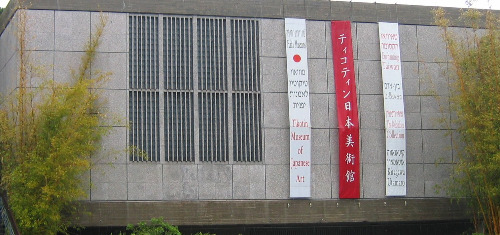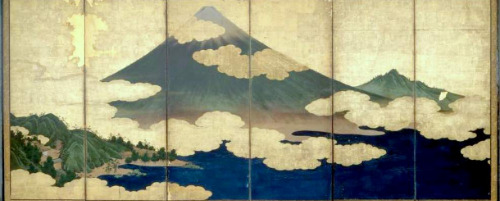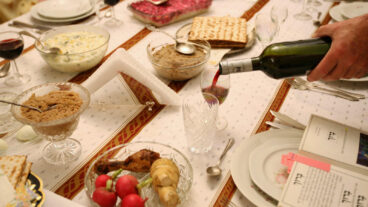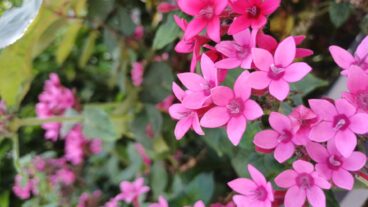It’s the only Japanese museum in the Middle East, and the turbulent history of the collection is as inspiring as the museum itself.

An unlikely and little-known treasure trove in Israel’s north is the Tikotin Museum of Japanese Art. It houses thousands of pieces and is the only museum of its kind in the Middle East. Located on Mount Carmel in Haifa, it has recently attracted the attention of NHK World, a Japanese TV channel which plans to film a program dedicated to the collection.
The museum is currently celebrating its jubilee year, an occasion it is marking with a special ‘Highlights’ exhibit. Spotlighting remarkable pieces from the spectrum of Japanese history, according to chief curator Dr. Ilana Singer, it contains “a little bit of everything” – ceramics, swords, paintings and prints.
A second exhibit displays new acquisitions, while a third offers a glimpse into the life of museum founder Felix Tikotin, a German-Jew who collected, lost and then refound, most of the treasures in the museum.
Tikotin, an architect, began building a collection of Japanese art before World War I. Afterwards he became an art dealer in Germany, specializing in Japanese art and continuing to build his own collection.
When the Nazis came to power in Germany, Tikotin went into hiding, and his collection was lost. In 1950, however, Dutch police called Tikotin in as an expert after they discovered art thieves trying to smuggle a collection of Japanese art out of the country. Tikotin discovered the collection was his own. Four years later, he decided to give the pieces to Israel.
A fascination with all things Japanese
Aside from housing Tikotin’s collection, the museum also serves as a cultural center, catering to an increasing Israeli fascination with Japan. A two-week summer program for children introduces elements of Japanese art and culture, but the majority of the programming caters to adults. In addition to academic lectures and screenings of Japanese films, they can choose from classes in Japanese language, writing, ink drawing, origami, and even flower arranging.
“I think the museum serves as a place where people have a chance to meet this culture through its art,” Singer tells ISRAEL21c.

Singer, who creates her own prints, has a passion for all things Japanese. “My fascination with Japanese art started with a fascination with Japanese people,” she explains.
When she was a child, a Japanese family lived on her kibbutz, Heftziba, and she would visit them from time to time. Many Japanese young people also came to the kibbutz to study Hebrew.
“Later on when I was a teenager, I had an amazing art teacher who introduced me to Japanese woodblock prints. So I have had this ‘virus’ ever since, and it does not go away,” says Singer. “I am attracted to the esthetic and philosophy of Japanese art, and I relate strongly to the art of the different periods. For example, I can relate to the Zen painting of one period, while responding just as strongly to the netsuke – small figurines – of the later Edo period. Each period of Japanese art has something different, something special, but in all Japanese art, the artist is aiming for perfectionism.”
The art of perfection
That, Singer tells ISRAEL21c, is what makes Japanese art unique. “I think it’s their ability to make anything, big or small, absolutely perfect.”
In its 50th year, the Tikotin is still the only museum in the Middle East dedicated to Japanese art and culture. Its collection of over 7,000 items ranges from drawings, paintings, woodblock prints, ancient illustrated books, ceramics, miniature netsuke sculptures, metal and lacquer works, antique Samurai swords and knives, to household objects such as fans and tea sets.
While the collection spans the seventeenth to nineteenth centuries and includes contemporary Japanese art, there is a particular concentration of art from the Edo period (1600-1868).
Singer explains that those centuries signified a revolutionary period in Japanese society, and consequently for its art. The middle class gained ascendancy through newfound wealth, she explains, and new artistic forms such as Kabuki theater began to flourish.
“The subjects of Kabuki were better suited for the lower classes – it was more colorful, with a lot of activity,” Singer says. Then the popularity of Kabuki spilled into the visual arts of Japan. “Woodblock prints depicted Kabuki actors, who were the celebrities of the time,” she explains.
Reaching a Japanese TV audience
Distinguishing between historic and contemporary Japanese art, Singer says, “Traditional Japanese art uses specific subjects that were familiar at the time, like Kabuki actors, scenes of Japan, or beautiful ladies who wandered the streets of Tokyo, or Edo.
“In contrast, in contemporary art there isn’t a common subject – like artists all over the world, they look for their own impressions.” Yet through all the centuries and still today, says Singer, “One thing about Japanese artists has remained the same: Their ability to create something which is perfect and complete and very clean. Their techniques and composition have a sense of purity – a sense you can find both in traditional art and in contemporary art. When you see it, you know it’s Japanese.”
Though unique and alone in the Middle East, the Tikotin is in contact with museums in Japan, and receives support from the Japanese embassy in Israel and the Japan Foundation.
Now the museum has been chosen to feature in a special program for Japanese TV. “We are really looking forward to this,” enthuses Singer. “People from NHK visited us with specialists from Japan who were very impressed with the collection of treasures here. They really want to make the program, and we will most likely do it next year.”












